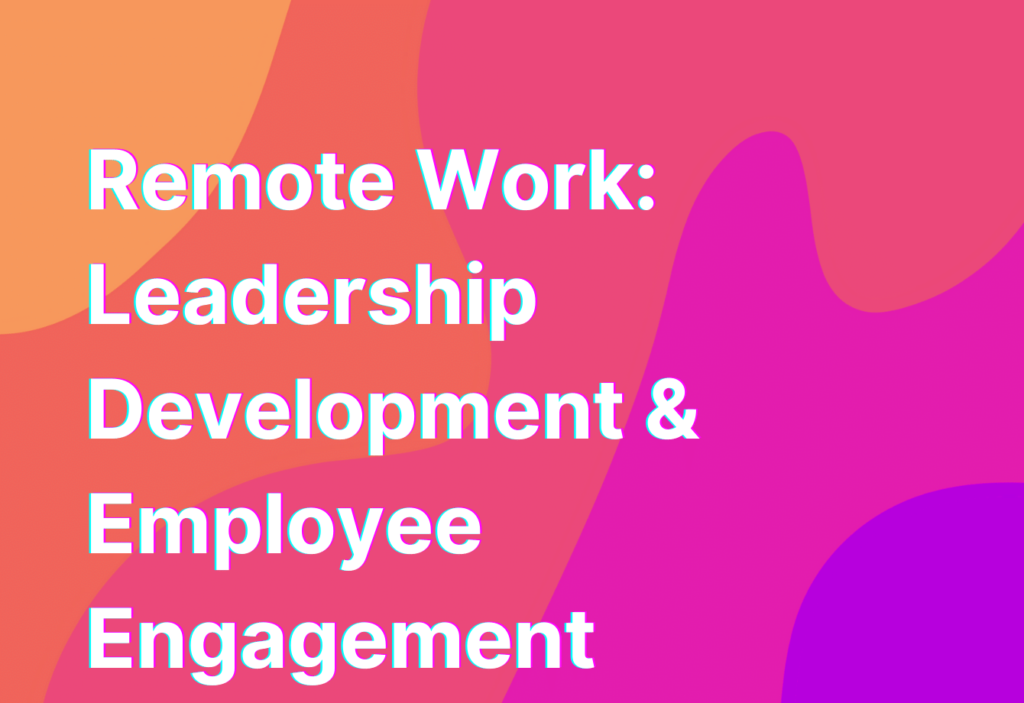Remote Work: Leadership Development & Employee Engagement
Hey there, remote work enthusiasts! It’s Ashley here, your friendly remote work advocate with 10 years of experience in the tech industry. Today, I want to talk about a topic that is near and dear to my heart: leadership development in remote teams. As more and more companies embrace remote work, it’s crucial for leaders to adapt their management styles and foster employee engagement in this new work environment. So, grab your favorite cup of coffee (or tea, if that’s your thing) and let’s dive in!
The Importance of Leadership Development in Remote Teams
Effective leadership is the backbone of any successful organization, and remote teams are no exception. In fact, leadership development becomes even more critical in a remote work setting. Without the physical presence and face-to-face interactions, leaders must find new ways to connect with their team members, provide guidance, and inspire them to reach their full potential.
So, how can leaders develop their skills and create a positive remote work culture? Let’s explore some strategies:
1. Communication is Key
When it comes to remote work, communication is the glue that holds everything together. As a leader, it’s essential to establish clear channels of communication and encourage open dialogue within your team. Regular check-ins, team meetings, and one-on-one conversations are all great ways to stay connected and address any concerns or challenges that may arise.
Pro tip: Don’t be afraid to use technology to your advantage! Tools like Slack, Trello, and Zoom can help facilitate communication and collaboration in remote teams. Check out Trello for an awesome project management tool that can keep your team organized and on track.
2. Lead by Example
Leadership is not just about giving orders and delegating tasks. It’s about setting a positive example for your team members to follow. As a remote leader, it’s important to demonstrate the qualities and behaviors you expect from your team. Show up on time for meetings, be responsive to emails and messages, and maintain a positive attitude even in challenging situations.
Remember, your team members are looking to you for guidance and inspiration. By leading by example, you can foster a culture of excellence and motivate your team to do their best work.
3. Provide Opportunities for Growth
One of the best ways to engage and retain remote employees is by offering opportunities for growth and development. Remote workers, just like their office-based counterparts, want to feel challenged and have a clear path for career advancement.
As a leader, take the time to understand your team members’ career goals and aspirations. Provide them with the necessary resources, training, and mentorship to help them grow both personally and professionally. This investment in their development will not only benefit them but also your organization as a whole.
4. Foster a Sense of Belonging
Working remotely can sometimes feel isolating, especially for team members who are used to the social interactions of an office environment. As a leader, it’s crucial to create a sense of belonging and foster a strong team culture.
Encourage team bonding activities, such as virtual happy hours or team-building exercises. Celebrate milestones and achievements, and make an effort to recognize and appreciate your team members’ hard work. By creating a supportive and inclusive remote work environment, you can boost employee engagement and morale.
5. Embrace Flexibility
One of the biggest advantages of remote work is the flexibility it offers. As a leader, it’s important to embrace this flexibility and empower your team members to find a work-life balance that works for them.
Allow for flexible work hours, as long as deadlines are met and communication is maintained. Trust your team members to manage their time and deliver results. By giving them the freedom to work in a way that suits their individual needs, you can foster a sense of autonomy and increase their overall job satisfaction.
Wrapping Up
Leadership development is a crucial aspect of remote work. By prioritizing effective communication, leading by example, providing growth opportunities, fostering a sense of belonging, and embracing flexibility, leaders can create a positive and engaging remote work environment.
If you’re interested in learning more about boosting employee engagement in remote teams, check out this article on Remote Teamer about the power of microbreaks. Trust me, it’s a game-changer!
That’s all for today, folks! I hope you found this article helpful and informative. If you have any questions or want to share your own experiences with remote work leadership, feel free to leave a comment below. Until next time, happy remote teaming!


